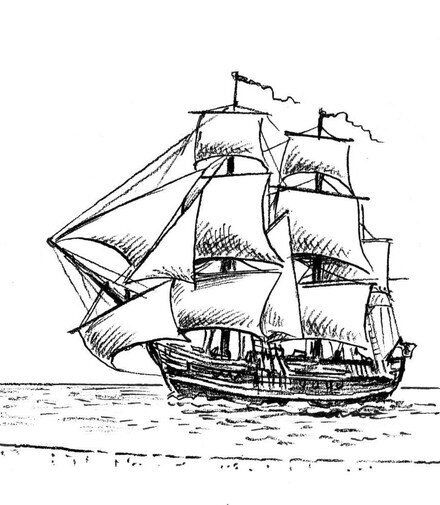
Last October, Hurricane Sandy sank a working replica of HMS Bounty, and claimed the lives of two crew members, one of whom was the vivacious Claudene Christian, a direct descendant of the mutineer Fletcher Christian. The ship featured in Marlon Brando's 1962 version of the Bounty story, and in two Pirates of the Caribbean movies.
It was the cinematic retellings of the mutiny that first sparked my interest in the history of the ship, that drove me to reconstruct the face of Fletcher Christian in the early 1990s, and that led me more recently to splash the mutiny across a double-page spread in The Gin Lane Gazette. Much less well-known than Hollywood's renderings of the Bounty tale, however, is the history of a small but remarkable vessel that was built by the mutineers themselves.
William Bligh captained the original Bounty in 1788, and was charged with acquiring breadfruit plants at the idyllic island of Tahiti, before delivering them to Jamaican plantation owners to provide cheap food for slaves. However, after the most famous personality clash in the annals of seafaring, Bligh's protégé, Fletcher Christian, seized the ship, and cast Bligh adrift in its small launch with eighteen loyal men. To stock up on provisions and women, Christian sailed the mutineers, and those who could not fit into the overcrowded launch, back to Tahiti, where a proportion of them elected to stay and take their chances with the British vessel that would, inevitably, be dispatched by the Admiralty to bring them to justice. Christian and his remaining followers made for the remote Pitcairn Island, where their descendants still live today.
Amongst the Tahitian contingent was James Morrison, the boatswain's mate, who formed a plan to build a craft with other Bounty crew members, and sail away to a colonial port. Keeping the true purpose of the vessel a secret from both their possessive Tahitian hosts and the more belligerent mutineers, Morrison and his confederates constructed a thirty-one-foot, eighteen-ton, half-decked, clinker-built schooner, complete with masts, boom, bowsprit, and a rudder. She was dubbed Resolution in honour of the more famous ship commanded by Captain Cook, who had acquired godlike status when he visited Tahiti some years before.

The completed vessel sailed beautifully, and was even inveigled into internecine war amongst the Tahitians. Morrison's achievement is all the more extraordinary when one considers how inadequate were the tools and materials with which he had to work. In his journal, he describes how it took two days to cut each thirty-foot plank of wood from Tahiti's trees, using nothing but small handsaws, one of which had been left behind by Cook. The trees themselves had to be dragged down the island's precipitous mountains, and the planks often split during the process of heating and bending them. They had a paucity of nails, and had to improvise with tree resins. They set the islanders to weaving 400 fathoms of rope, and matting that was to take the place of canvas for sails.
After seven months of sweaty labour, the Resolution was dragged nearly a mile to the shore, christened with the help of some home-brewed cider, and launched with much ceremony by the astonished Tahitians.
The Admiralty's long-dreaded retribution arrived at the island in March of 1791, in the shape of HMS Pandora. The Bounty crew were rounded up, imprisoned in a tiny, airless cell on the deck that became known as Pandora's Box, and carried off to face courts martial. The Resolution was commandeered as Pandora's tender, renamed Matavy after Tahiti's wide bay, and used in the unsuccessful hunt for the remaining mutineers. She became separated from Pandora during a gale, and was sailed to the Friendly Isles via the Samoas, flirted with the Fiji islands, negotiated the Endeavour Strait, headed to the Indonesian islands, then to the coast of Java via the Strait of Bali, and finally dropped anchor at Batavia in the Dutch East Indies, where she was reunited with the Pandora's crew, who had been wrecked on the Great Barrier Reef before hitching a ride on a Dutch East Indiaman.
This plucky little vessel was then given by Pandora's captain to the governor of Timor in thanks for his assistance. She later sailed away from Timor to the coast of America, where she was used in the trading of sea-otters. It is reported that she made a record-breaking run from China to Hawaii, before finally evaporating from the historical record somewhere in the Far East. Her resolute shipwright, James Morrison, was tried and found guilty of mutiny back in Blighty, but escaped hanging from the yardarm on a technicality. His luck finally ran out in 1807, when he and all hands were lost in a gale in the Indian Ocean that claimed the ship HMS Blenheim, on which he was serving as master gunner.
The Gin Lane Gazette on sale now!